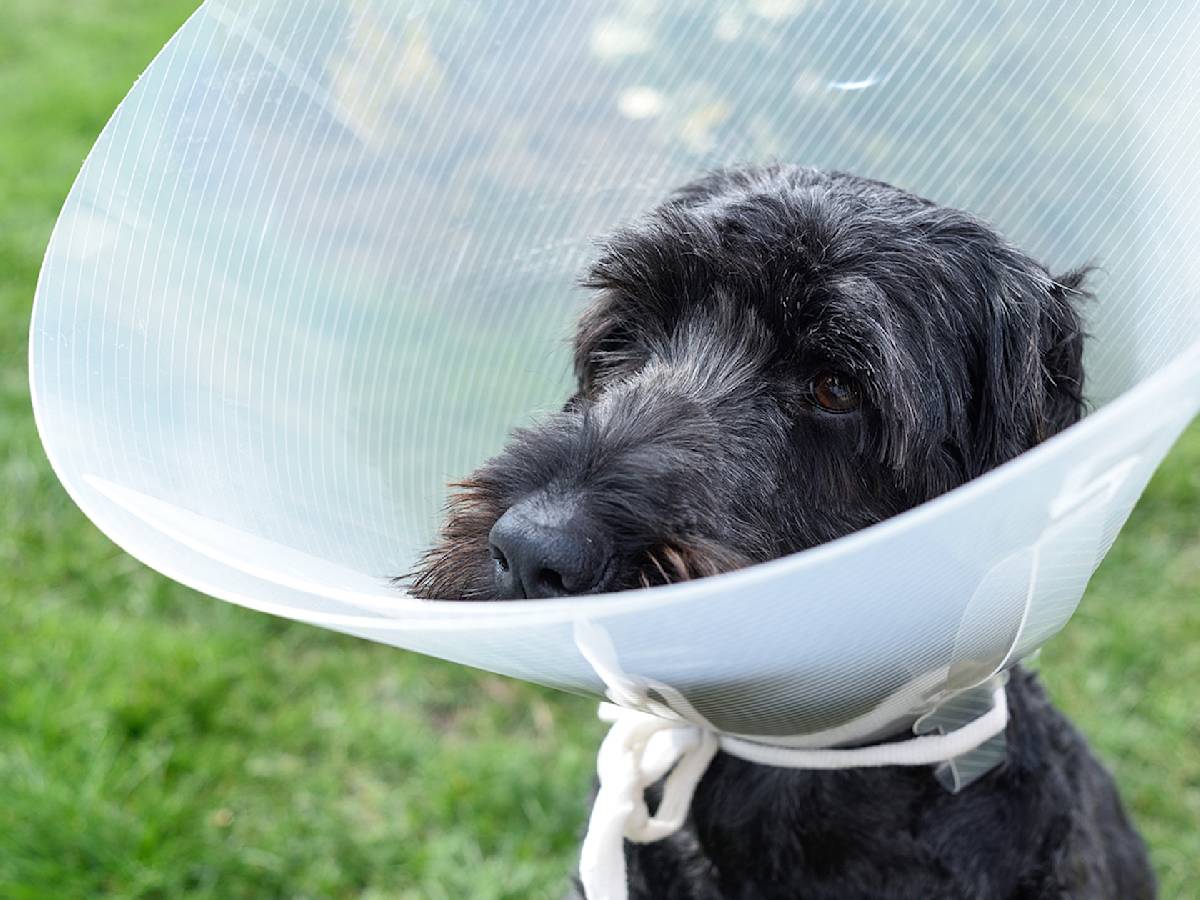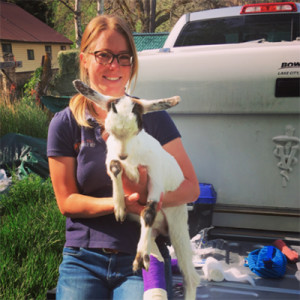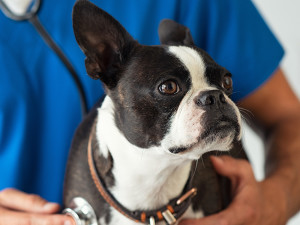Everything You Need to Know About Spaying Or Neutering Your Dog
A vet’s take on why it’s a smart choice

Share Article
If you’ve arrived at this page, you are probably the proud new parent of a puppy – congrats! You are also probably overwhelmed by all the decisions you need to make: dry or wet food, collar or harness, daycare or dog walker? You might even be confused about when (and if) you should spay or neuter your dog. It’s a big decision for a new pet parent to make. Veterinarians recommend it, but is it always the right choice?
Hopefully, we can make this one easy for you: yes, you should spay or neuter your dog if you do not intend to breed them. Even though dog adoption is on the up and up, overpopulation remains a huge problem and many unplanned pups meet poor fates. Spaying or neutering dogs can really turn this problem around, but beyond doing it for the greater good, there are pretty compelling health benefits. Keep reading, I’ll explain everything.
Why spay or neuter your dog?
There are plenty of proven major health and behaviour benefits to spaying and neutering your pup. Neutering a male dog can prevent some prostate disorders and eliminate risk of testicular cancersopens in new tab, and spaying a female dog can prevent pyometra (a serious hormone-induced uterus infection) and breast canceropens in new tab – yes, dogs get breast cancer too. Unspayed female dogs also go ‘into heat’ – ovulate and become receptive to male dogs – approximately twice a year, when they can spot blood for up to three weeks. And unneutered male dogs are more likely to ‘mark’ or lift their legs everywhere to woo said females. Charming.
Without a doubt, the benefits of spaying or neutering your pup will help them lead a long, happy life. Here’s a breakdown of the benefits:
Drastically reduces their chance of getting breast (mammary) cancer.
Eliminates the risk of testicular cancer in male dogs.
Prevents serious womb infection, which affects older female dogs and often involves emergency surgery.
Removes the risks associated with birth-related complications.
The risk of some prostate disorders and types of cancer is reduced in male dogs.
No spotting blood with a season. That means no messy clean-ups and no male dogs knocking down your door.
Reduces certain types of aggressive behaviour.
Studies show neutering can decrease their desire to roamopens in new tab.
Dogs will have an elevated life expectancyopens in new tab compared to intact dogs.
Helps limit overpopulation by removing the potential for unplanned pups.
What are the risks of spaying or neutering?
There are many benefits to spaying and neutering your dog, but what about the risks? While complications are uncommon, there are some risks to be aware of. Dogs who have been spayed or neutered may be more at risk for:
Certain cancersopens in new tab
Cruciate ligament disease
Canine hip dysplasia
Obesity
Urinary incontinence
The risks associated with spaying and neutering are rare, but there’s one exception: obesity. But this is the condition over which you have the most control, and avoiding obesity can also help reduce the possibility of those other risks. So, be thoughtful about the type of food and the amount you feed your dog. Seriously, one of the best things you can do for your dog’s health is to be conscious about their diet as it has been found that the median life expectancy is shorteropens in new tab in overweight dogs compared to normal weight dogs.
What to expect with the surgery itself
Let’s talk surgery specifics. A neuter is the removal of a male dog’s testicles, which halts testosterone production and renders them sterilised. Most vets will remove the testicles and often leave behind the scrotum. A spay removes either a female dog’s ovaries (ovarioectomy), or both the ovaries and uterus (ovariohysterectomy), so she cannot get pregnant. If this is all starting to stress you out, don’t worry: the surgeries are done under anaesthesia, so your pup won’t feel a thing. Because this surgery is routine and has low complication rates, most dogs quickly recover without any problems. In many cases, dogs brought in for morning surgery can be safely sent home the same day to be monitored.
How much does spay or neuter surgery cost?
Costs can vary depending on where you live, but most clinics tier surgery costs based on your dog’s size (the bigger the dog, the more anaesthetics, IV fluids and surgical materials are needed). Neuters generally range from £110 to £300, and spays from £130 to £500 because they’re more invasive. On that subject, some vets offer laparoscopic surgeries, which are less invasive but more expensive. If surgery is out of your budget, some pet insurance plans cover it. If not, ask your vet about payment options, and look into local low-cost spay or neuter services, like those offered by the RSPCA,opens in new tab Blue Cross and PDSA.
When should you spay or neuter your dog?
As if the why wasn’t controversial enough, when to spay or neuter your dog is also a hotly debated subject – even among vets. The general consensus on the best age to spay or neuter a dog is around six months to a year old, which is when female dogs are fertile and, as such, at risk of mammary cancer. For up-to-date breed-specific guidance on when to neuter you pet, speak to your vet and ask them to help you unpick and follow the advice from this University of California studyopens in new tab.
What is the most common age to spay or neuter at rescue centres?
If you adopted a pup from a rescue organisation, they were likely spayed or neutered at an earlier age, which is standard and meant to prevent pregnancies among puppies sheltering together. While you won’t have much of a say about when your rescue dog is neutered, it’s important to remember that the benefits of spaying or neutering your dog almost always outweigh the risks. And spaying or neutering your dog doesn’t just affect your pup – it benefits dogs everywhere because it prevents overpopulation and keeps more dogs out of the rescue centres.
When should you spay or neuter your small-breed dog?
Size matters. It’s safer to wait until a dog is at least 2.5kgs to go under anaesthesia, so if you have a small-breed puppy, your vet will probably recommend waiting until they’re bigger. Those serious (but rare) health risks mentioned earlier are less likely with small-breed dogs, so they can be neutered at a younger age.
When should you neuter your large-breed male dog?
Large-breed dogs are more likely than small-breed dogs to develop issues (like joint problems) after being neutered. Studiesopens in new tab have also shown that generally waiting until large-breed pups are at least one year old to neuter them lowers the risk of bone cancer because hormones influence bone growth and, naturally, Doberman Pinschers have a lot more growing to do than their Min Pin cousins.
When should you spay your female dog?
Interestingly, unlike with male dogs, age and breed aren’t the only driving factors. For female dogs, each time they go into heat, their risk for major health concerns (like womb infection) increases.
Ultimately, the decision about when to spay or neuter your pup should be one you have with your veterinarian. They can share their expertise while considering your dog’s specific risk factors and help you make an informed decision.
Resources
Prostatic disorders in the dogopens in new tab
Can sterilization help to prevent roaming in owned dogs and cats?opens in new tab
Association between life span and body condition in neutered client-owned dogsopens in new tab

Oneal Bogan, DVM
Oneal Bogan, DVM, is a mixed animal veterinarian from Colorado. Dr. Bogan loves the variety of animals she gets to work with. She owns her own mobile practice which provides at-home care to large and small animals. Dr. Bogan also works at a local small animal clinic. In her free time, Dr. Bogan loves to hike, ride horses, and read. She also loves writing and hopes her advice helps all pets live a happy, healthy life.
Related articles
![woman with new puppy]()
9 Unexpected To-Dos for New Pet Parents
Sound advice from seasoned dog and cat parents who have been there
![Great Dane dog and Chihuahua dog laying in the grass]()
Wondering How Big Your Puppy or Kitten is Going to Get?
We know, our pets grow up too fast. But seriously, how fast is too fast (or slow)? Kinship and Waltham Petcare Science Institute created a simple tool to help your new pet’s growth stay on track
![Playful Chihuahua with toy in mouth laying on an orange dog bed]()
“Help! How Do I Get My Dog to Stop Eating Socks”
How to get your pet to stop chewing on inedibles from clothes to couches
![A black dog with a tilted head looks attentively at the camera while sitting in grass.]()
Is My Dog’s Poo Normal?
From bloody poo to diarrhoea – all your dog’s poo problems explained






